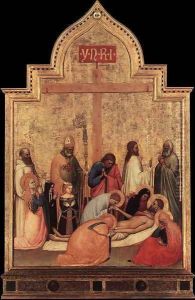Giottino Paintings
Giottino, born Tommaso di Stefano in 1324, was an Italian painter of the Florentine school during the Middle Ages, recognized for his contribution to the development of more naturalistic approaches to painting. Despite the affectionate diminutive 'Giottino' (little Giotto) suggesting a direct relation, he was not, in fact, Giotto di Bondone's son but was so named for his remarkable emulation of Giotto's style. This attribution reflects the high esteem in which his contemporaries and later art historians held his skill in capturing the emotional depth and human realism that Giotto pioneered.
Giottino's work represents a critical link between the groundbreaking innovations of Giotto in the early 14th century and the later advancements that would culminate in the Renaissance. His most celebrated contributions lie in his frescoes and panel paintings, which exhibit a remarkable understanding of light, shadow, and volume, bringing a heightened sense of realism and emotional expression to the subjects of his works. Notable among his achievements are the frescoes in the Basilica of Santa Croce in Florence, which showcase his talents in narrative storytelling and his ability to convey profound religious themes with a human touch.
Though his life was relatively short, with his death in 1369, Giottino's legacy in the trajectory of Italian art is significant. He was one of the first to move beyond the Byzantine influences that dominated much of Italian painting before Giotto, pushing the boundaries of art toward the more naturalistic and human-centered perspective that would define the Renaissance. His works are characterized by a delicate sensitivity to the nuances of human emotion, a trait that made his paintings resonate with viewers. Despite the scarcity of surviving works confidently attributed to him, his influence is recognized in the evolution of Western art, bridging the gap between the medieval and the modern with his innovative approach to painting.

